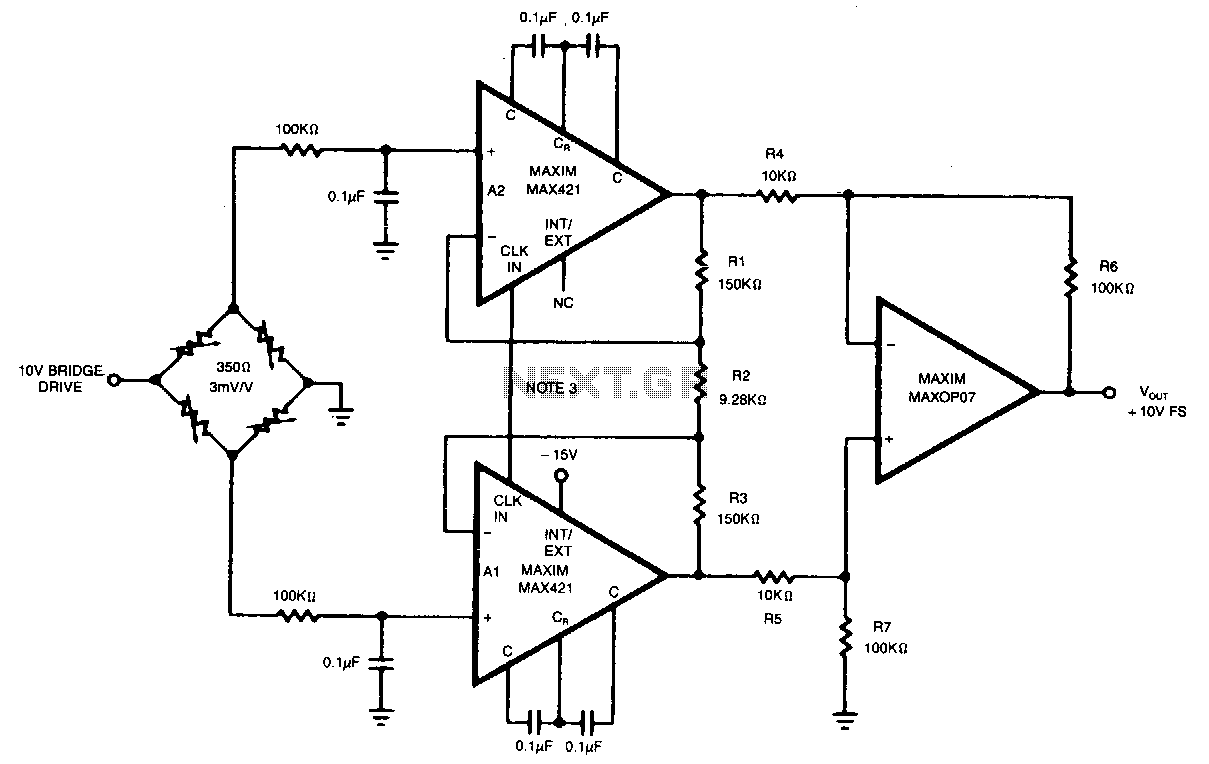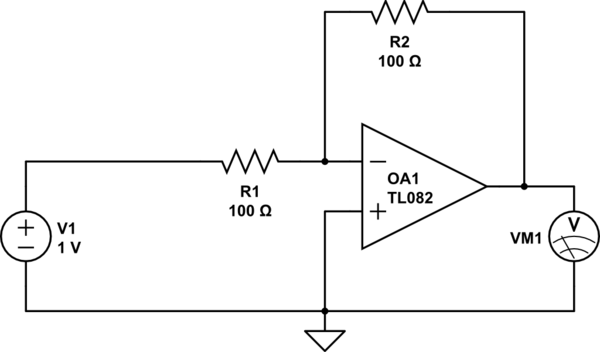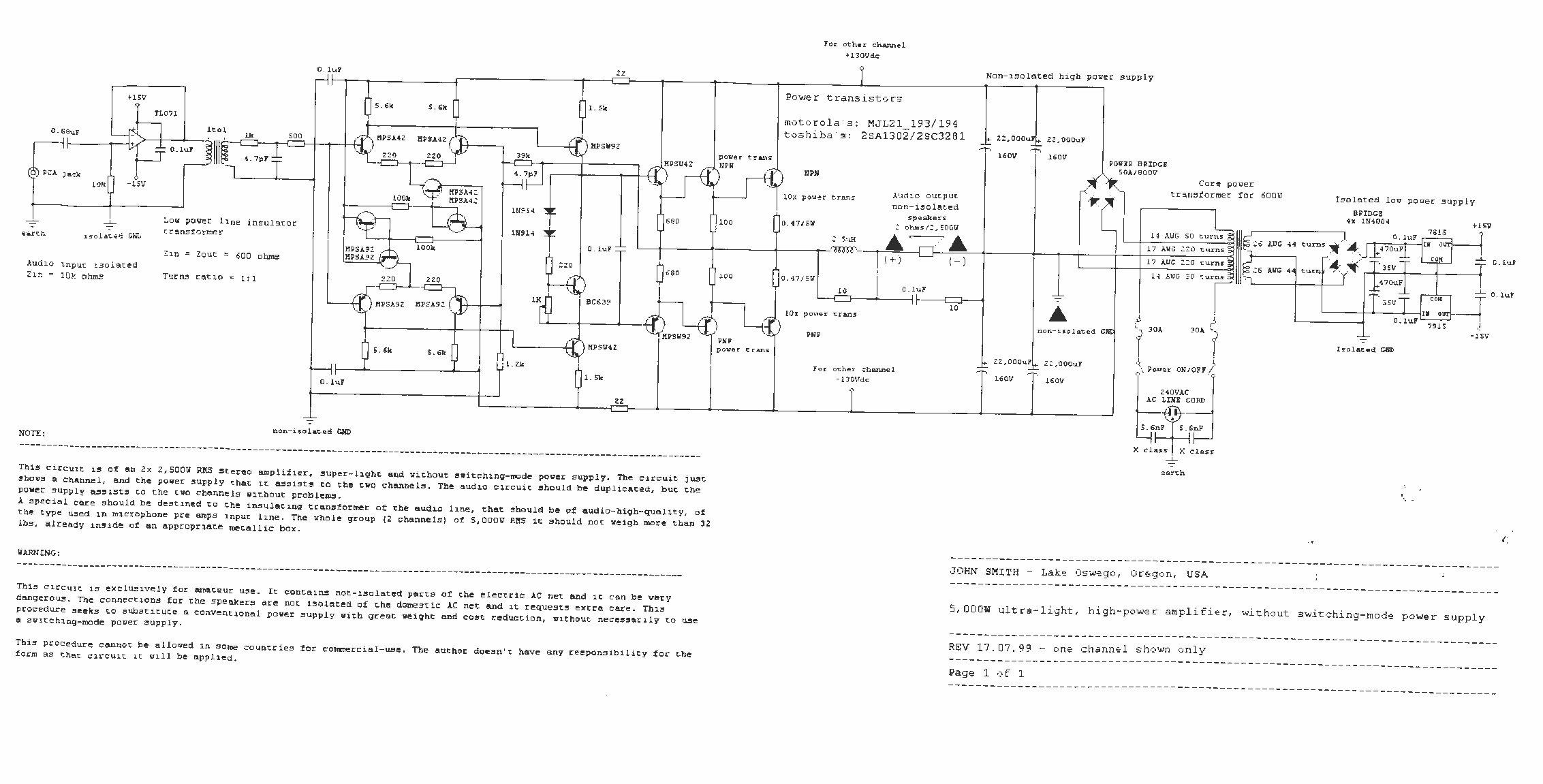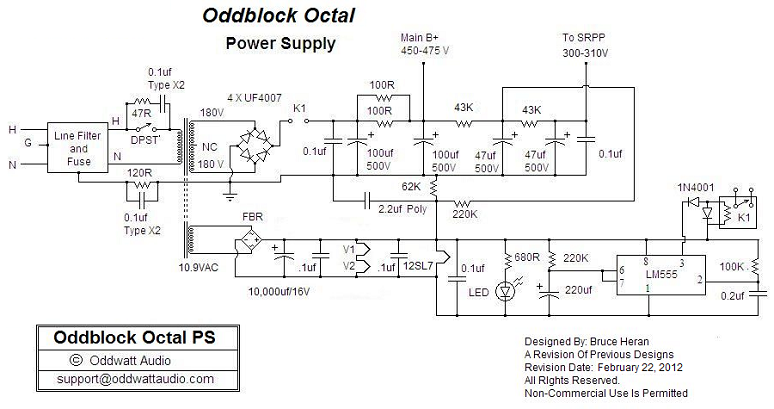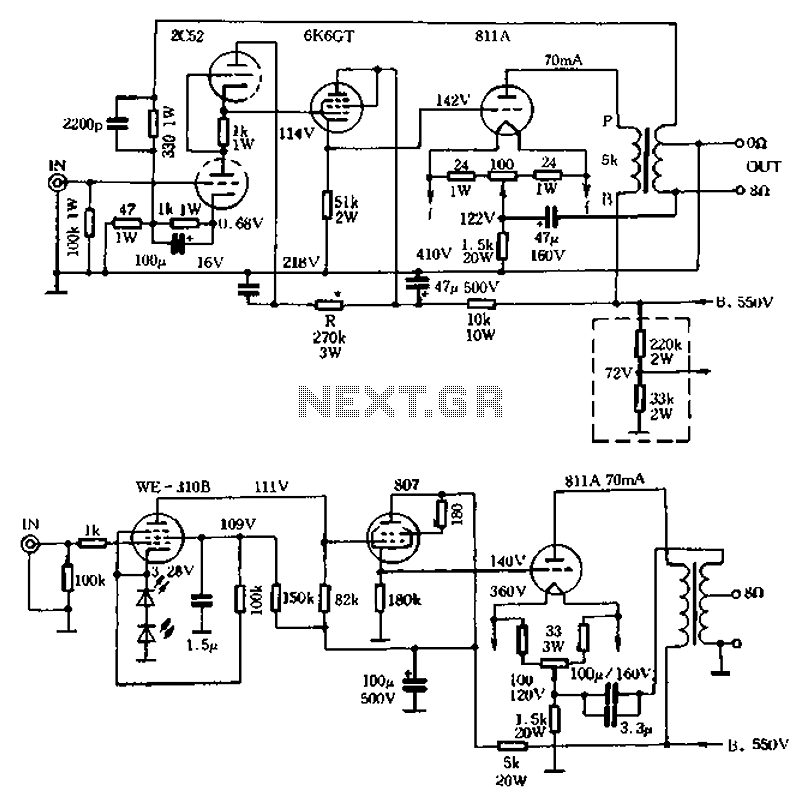
Stereo car audio amplifier TDA1557Q TDA1553Q
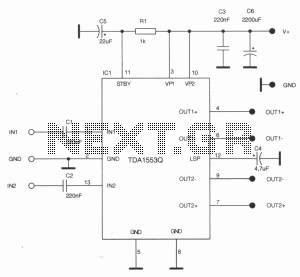
This stereo amplifier is designed for automotive applications and can deliver up to 2 x 22W using a single TDA1557Q or TDA1553Q from Philips.
The stereo amplifier circuit utilizes the TDA1557Q or TDA1553Q integrated circuit, which is a high-performance audio amplifier designed specifically for car audio systems. These ICs are capable of delivering a maximum output power of 22 watts per channel, making them suitable for driving speakers in a vehicle environment.
The circuit typically includes several key components:
1. **Power Supply**: The amplifier requires a DC power supply, often sourced from the vehicle's battery. The voltage range is typically between 12V to 14.4V, accommodating the standard automotive electrical system.
2. **Input Stage**: The input stage of the amplifier is designed to accept audio signals from various sources, such as a car radio, smartphone, or other audio devices. Capacitive coupling is often employed to block any DC offset, ensuring that only the AC audio signal is amplified.
3. **Feedback Network**: A feedback network is integrated to stabilize the gain and improve linearity. This network helps to minimize distortion and achieve a cleaner audio output.
4. **Output Stage**: The output stage is where the TDA1557Q or TDA1553Q amplifies the audio signal to the required power level. The output is typically connected to the vehicle's speakers, with appropriate filtering to remove any high-frequency noise that may be present.
5. **Protection Circuitry**: To ensure reliability and longevity, the amplifier may include protection circuitry to guard against overcurrent, overheating, and short circuits. This is particularly important in automotive applications where environmental conditions can vary significantly.
6. **Heat Dissipation**: Given the power output, the design should incorporate adequate heat dissipation mechanisms, such as heatsinks, to prevent thermal overload during operation.
Overall, this stereo amplifier circuit is engineered to provide robust audio performance in a car environment, ensuring that users can enjoy high-quality sound while driving. The choice of TDA1557Q or TDA1553Q allows for efficient operation and ease of integration into existing automotive audio systems.This stereo amplifier is for car purpouse and can deliver up to 2 x 22W using a single TDA1557Q or TDA1553Q from Philips. TDA1557Q TDA1553Q datasheet More audio car amplifier circuits.. 🔗 External reference
The stereo amplifier circuit utilizes the TDA1557Q or TDA1553Q integrated circuit, which is a high-performance audio amplifier designed specifically for car audio systems. These ICs are capable of delivering a maximum output power of 22 watts per channel, making them suitable for driving speakers in a vehicle environment.
The circuit typically includes several key components:
1. **Power Supply**: The amplifier requires a DC power supply, often sourced from the vehicle's battery. The voltage range is typically between 12V to 14.4V, accommodating the standard automotive electrical system.
2. **Input Stage**: The input stage of the amplifier is designed to accept audio signals from various sources, such as a car radio, smartphone, or other audio devices. Capacitive coupling is often employed to block any DC offset, ensuring that only the AC audio signal is amplified.
3. **Feedback Network**: A feedback network is integrated to stabilize the gain and improve linearity. This network helps to minimize distortion and achieve a cleaner audio output.
4. **Output Stage**: The output stage is where the TDA1557Q or TDA1553Q amplifies the audio signal to the required power level. The output is typically connected to the vehicle's speakers, with appropriate filtering to remove any high-frequency noise that may be present.
5. **Protection Circuitry**: To ensure reliability and longevity, the amplifier may include protection circuitry to guard against overcurrent, overheating, and short circuits. This is particularly important in automotive applications where environmental conditions can vary significantly.
6. **Heat Dissipation**: Given the power output, the design should incorporate adequate heat dissipation mechanisms, such as heatsinks, to prevent thermal overload during operation.
Overall, this stereo amplifier circuit is engineered to provide robust audio performance in a car environment, ensuring that users can enjoy high-quality sound while driving. The choice of TDA1557Q or TDA1553Q allows for efficient operation and ease of integration into existing automotive audio systems.This stereo amplifier is for car purpouse and can deliver up to 2 x 22W using a single TDA1557Q or TDA1553Q from Philips. TDA1557Q TDA1553Q datasheet More audio car amplifier circuits.. 🔗 External reference

